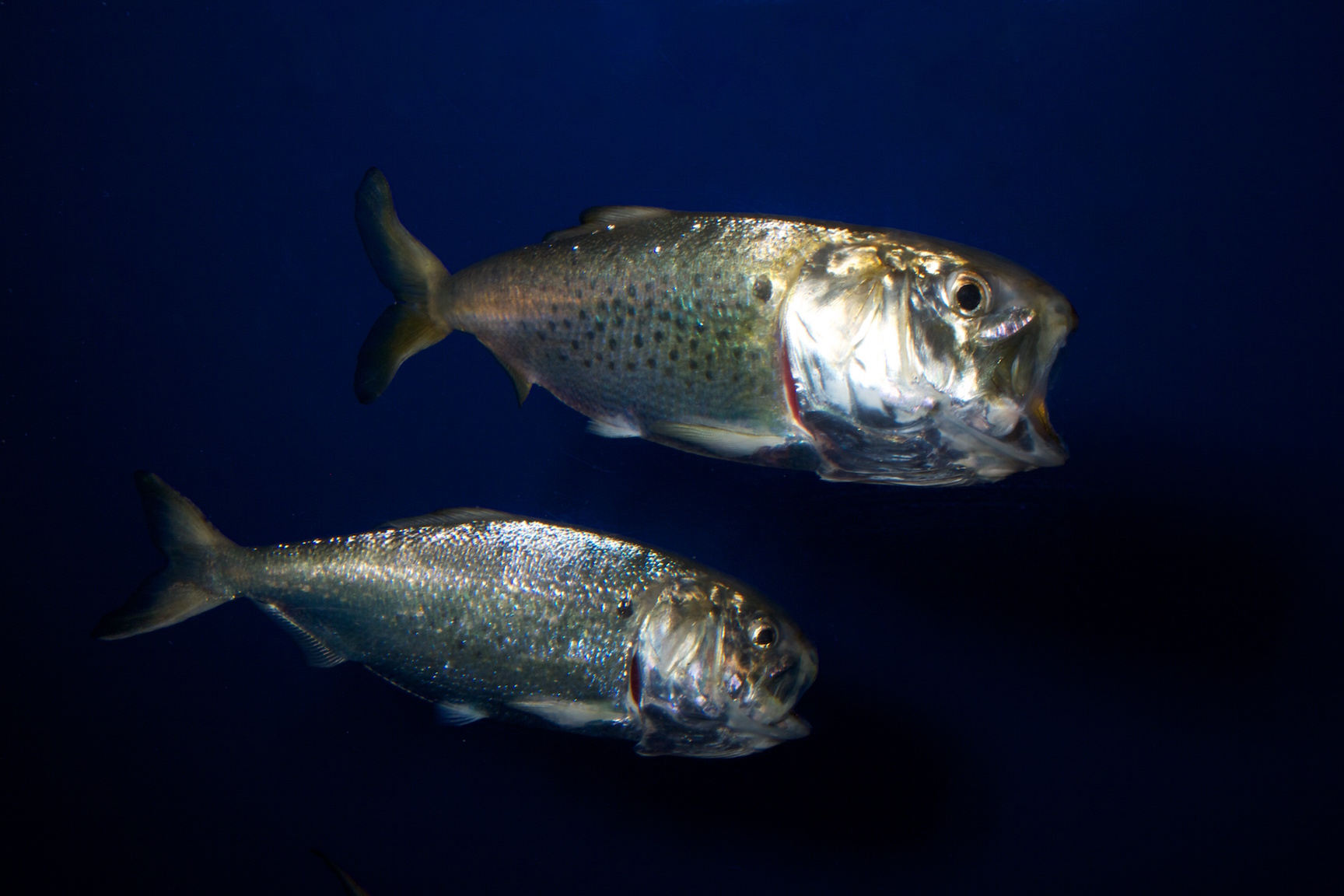Menhaden Misinformation: Four Organizations Push Drastic Cuts that Contradict the Assessment Record and Ecosystem-Based Management
WASHINGTON, DC / ACCESS Newswire / October 27, 2025 /The Chesapeake Bay Foundation (CBF), American Sportfishing Association (ASA), Theodore Roosevelt Conservation Partnership (TRCP), and the American Saltwater Guides Association (ASGA) are circulating claims about Atlantic menhaden that don 't match the assessment record or how this fishery is managed.
Managers already have an ecosystem framework in place that ties menhaden harvest to predator needs. The 2025 single-species and Ecological Reference Points (ERP) assessment components (adopted and implemented by the Atlantic States Marine Fisheries Commission (ASMFC)) underwent external peer review; under Total Allowable Catch (TAC) levels set since 2021, the stock is not overfished and overfishing is not occurring in an ecosystem context. Risk management is keyed to avoiding the ERP fishing mortality threshold, and not arbitrary percentage cuts.

Claims being circulated, and the record
1) "Striped bass anglers are making big sacrifices that will be wasted unless menhaden quotas are cut by ~50%."
The record:
Rebuilding success depends on keeping striped bass fishing mortality (F) low and hoping for improved recruitment; the few recent strong year classes (e.g., 2015, 2018) were heavily impacted by fishing mortality, and Chesapeake Bay recruitment has been below average for years, issues not caused by a menhaden-forage deficit. The next striped bass amendment must hold F low enough to protect weaker cohorts.
Assessment-team reinforcement: the Assessment report indicated that "minor changes in Atlantic menhaden harvest rates are not expected to have major negative effects on most predators"; rather only increasing effort to the "overfishing" level (FTHRESHOLD) "would cause declines in biomass for more sensitive predator species, particularly striped bass." "As a result, … the probability of exceeding the ERP FTHRESHOLD under the current TAC is low."
Proposals for cuts up to 55% are not indicated by the risk framework and would devastate the 150-year-old reduction fishery, small-scale bait fishermen along the coast, and the lobstermen and crabbers who depend on them without helping striped bass fishermen.
2) "Striped bass are starving due to a lack of menhaden; severe menhaden cuts are needed to rebuild striped bass."
The record:
Striped bass rebuilding is driven by reducing striped bass mortality within the 10-year plan to 2029; board discussions since 2019 have focused on striped bass controls, not a forage shortage from the menhaden fishery.
Chesapeake Bay workgroup monitoring from Virginia and Maryland reported healthy striped bass body condition; the fish are not underfed.
Menhaden removals overlap little with what predators eat most: predators primarily consume age-0/1 menhaden, while the reduction fishery targets age-2+ fish.
Assessment team reinforcement: the fishery has limited impact on predators like striped bass because they largely rely on younger fish not targeted by the fishery, and recruitment (environment) is the main driver of young menhaden 's availability to predators.
3) "Severe coastwide cuts are necessary to hit a probability of not exceeding the ERP mortality (F) target."
The record:
National Standard 1 (NS1) of the Magnuson-Stevens Fishery Conservation and Management Act (MSA) and peer-reviewed advice focus on preventing overfishing; the operative risk line in the ERP control rule is the F threshold, not the policy F target. Managers should select TACs that avoid any chance of exceeding the threshold.
Assessment team reinforcement: even maintaining the current TAC carries a low probability of exceeding the ERP F threshold; if managers seek extra assurance, a precautionary reduction of no more than 10% (to ~210,195 mt) produces no chance of overfishing in 2026 and only ~1% if held through 2027-2028.
ERP-based management already protects predators by capping risk at the ERP F threshold; under this system, menhaden are not overfished, and overfishing is not occurring in an ecosystem context.
Adjusting TAC: a ≤10% precautionary reduction (~210,195 mt) provides no chance of overfishing in 2026 and about 1% if held through 2027-2028. Larger cuts are not indicated by the risk framework.
4) "Past TACs were far too high because menhaden abundance was overestimated."
The record:
ERP-era TACs were set conservatively to avoid exceeding ecosystem risk thresholds; under ERP management since 2021, menhaden remain not overfished and overfishing not occurring in an ecosystem context.
The 2025 assessment 's natural mortality (M) re-estimation was empirically derived from the Ahrenholtz tag-recapture database and independently reviewed; the single-species and ERP models were externally peer-reviewed (including through NOAA Fisheries ' Center for Independent Experts) and should be treated as authoritative.
Assessment team reinforcement: despite a rigorous reevaluation that reduced fecundity estimates, stock status remains "not overfished" and "overfishing is not occurring," attributed to "management [that] has consistently been more conservative than single-species reference points would have historically prescribed and [which] has continued with a conservative approach even under the 2020 ERPs [i.e., the current TACs]."
5) "Earlier assessments misestimated abundance by ~37%; ‘errors ' require a 55% TAC reduction."
The record:
The "37%" talking point is misstated and does not justify fixed percentage cuts. The current natural mortality (M) (~0.932) is higher than historic values sometimes cited and was endorsed by the Center for Independent Experts after intensive scrutiny of the tag-recapture database. There is no basis to convert M updates into a mandated 55% reduction under ERPs.
Assessment team reinforcement: recruitment (environment) is the main driver of menhaden availability to predators; managing to the ERP fishing mortality threshold, not reverse-engineering large headline cuts, aligns with the science.
6) "Because the coastwide assessment ignores Bay impacts, new Chesapeake Bay-specific limits are needed now."
The record:
There is no scientific justification for new Bay-specific limits beyond ERPs at this time; research from the Science Center for Marine Fisheries now underway will inform any Bay-focused questions, and managers should await the new science before acting.
Bottom line
ERP-based management already protects predators by capping risk at the ERP fishing mortality threshold; under this system, menhaden are not overfished, and overfishing is not occurring in an ecosystem context.
Rebuilding striped bass depends on reducing striped bass fishing mortality; broad menhaden cuts are not a substitute and are not indicated by the ERP risk framework.

About the Menhaden Fisheries Coalition
The Menhaden Fisheries Coalition (MFC) is a collective of menhaden fishermen, related businesses, and supporting industries. Comprised of businesses along the Atlantic and Gulf coasts, the Menhaden Fisheries Coalition conducts media and public outreach on behalf of the menhaden industry to ensure that members of the public, media, and government are informed of important issues, events, and facts about the fishery.
Press Contact
Menhaden Fisheries Coalition
(202) 595-1212
www.menhaden.org
SOURCE:Menhaden Fisheries Coalition
View the original press release on ACCESS Newswire
© 2025 ACCESS Newswire. All Rights Reserved.



















